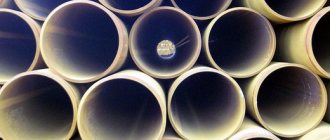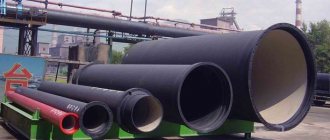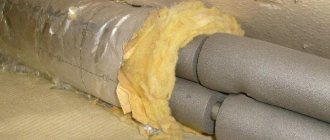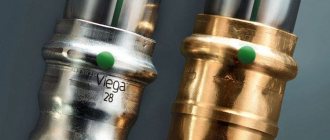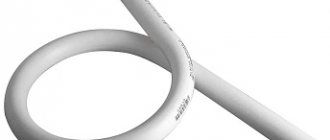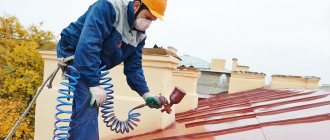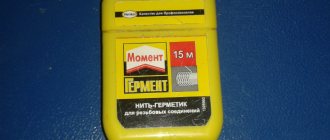To view the video, you need a modern browser that supports HTML5 video.
While some types of rolled products can do without protective coatings, powder painting of the pipe is rather a mandatory procedure. The main area of application of pipes is installation of communications. Bringing heat, gas and other benefits into our homes, they experience a double load: both from the external and transported environment. Unprotected pipes wear out and require replacement much faster. Coloring helps solve this problem completely or partially.
Advantages of powder coating of pipes
Despite the fact that powder painting of pipes in Moscow cannot be called a democratic service, customers increasingly prefer it to “old” methods of painting. In addition to saving the composition, the technique has other advantages. This:
- high speed of work: if you do not take into account the time spent on applying paint and cooling the finished product, polymerization lasts approximately 30 minutes. The process can only take longer if the paint is applied in two layers;
- low labor intensity. Powder paint does not need to be pre-diluted and prepared for use, and it is easy and convenient to apply;
- environmental friendliness. Unpleasant odors, toxins, flammable components of the substance - all this is not about powder paint;
- resistance to environmental conditions, physical and mechanical strength;
- nice appearance. A rich palette of colors will delight lovers of all colors and shades.
Oil paint for heating pipes
This material is made using oils of organic origin and in previous, not so distant times, it was almost the only option for painting metal products. This material copes well with the function of “paint for heating pipes”. It has excellent hiding power, is resistant to abrasion and high temperatures.
Despite its advantages and low cost, this paint and varnish material has been completely abandoned in modern times.
This is justified by the following arguments:
- a specific and unpleasant odor that accompanies painting work.
- Low thermal threshold after drying: when the radiator battery is heated above 80 degrees, it can emit an unpleasant odor.
- The hiding power of the paint is so high that the resulting thick layer applied to the battery significantly reduces heat transfer, which reduces its efficiency.
- Due to the consistency of oil paint, uniform application on the product is almost impossible.
- During use it is subject to tarnishing and yellowing.
- Long drying time, which entails an increase in the duration of work.
As can be seen from the above, oil paint has a number of significant disadvantages.
Disadvantages of powder coating pipes
Powder coating of pipes also has disadvantages.
But since they do not outweigh the positive properties, it would be more correct to call them difficulties in work. Firstly,
The container in which the dry powder substance for coloring is placed can only be used once - for paint of one color. And then dispose of it.
Secondly,
When working with a spray can, you must follow safety precautions: in the wrong hands it can explode.
Third,
Even an experienced craftsman will find it difficult to adjust the layer thickness.
And finally, fourthly
: It is necessary to ensure the optimal temperature in the room for work.
In cold environments the composition does not adhere well. Many of our customers are interested in painting pipes: the price for this service. At the same time, they understand well that the painting process itself is specific and has many features. Unlike rolled products without internal voids for pipes, it is the internal cavity that is of decisive importance, because it will be in contact with the liquid or gaseous medium passing through the network. Therefore, corrosion protection of the internal walls is of fundamental importance. It is not surprising that prices for painting pipes are slightly higher than for many other products.
Features of surface and enamel for painting
To paint the surface of a slab, you do not need to have special knowledge; it is enough to have basic information and take into account some features when painting yourself. But it is worth considering the fact that ordinary enamel is not suitable for painting the surface of a gas stove, since when exposed to high temperatures, such paint very quickly deteriorates and peels off.
You can paint the stove at the place where it is installed, but it is still advisable to temporarily disconnect the device from the gas supply network.
First, let's look at the type of surface of gas stoves. So, most often, in the manufacture of gas appliances, alloyed stainless steel is used. The metal has a high degree of resistance to high temperatures.
This surface is painted with special enamel to protect the coating from corrosion and give the gas appliance a beautiful appearance.
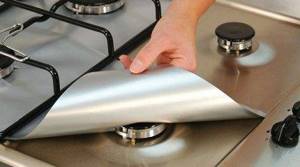
Before you start painting the gas stove, you need to remove the old layer of paint. To do this, you can use a metal brush, sandpaper or a chemical agent. Only after this can you start painting the old surface.
Plain enamel or acrylic paint is not suitable for painting the surface of a gas stove. Because when exposed to high temperatures, it will melt and burn.
The paint for the surface of a gas stove must be resistant to high temperatures and other destructive factors.
As a rule, enamels with the following properties are used for painting:
- Internal stability. Such enamels withstand high temperatures well and do not deteriorate in conditions of high acidity.
- External stability. This protection is designed to protect the metal surface; the enamel protects both from thermal stress and chemical processes.
Such characteristics are necessary for long-term use of a gas appliance in aggressive conditions.

Heat-resistant paint is intended for painting surfaces exposed to high temperatures. This option is suitable for painting the slab yourself
To achieve the required level of stability, enamel for restoration of a gas stove must include the following elements:
- quartz sand;
- soda;
- feldspar;
- borax.
All these elements form a transparent mixture, to which you need to add some more components.
To obtain the most effective paint for devices exposed to high temperatures, the following elements are additionally added during production:
- alumina;
- zinc;
- alkaline elements;
- titanium;
- lead.
This entire composition forms a high-quality paint with high resistance to aggressive factors and imparts a beautiful shine to the painted surface.
It is worth noting that enamels with the addition of cobalt and nickel oxides have better adhesion to the element being painted. This paint can be applied even to a surface that has not been treated with a primer.
Painting gas pipes
When determining how much it costs to paint a pipe—a linear meter—experts also take into account its purpose. Gas pipes have their own specific processing - both domestic and those that are part of main gas pipelines. Since they transport a potentially hazardous substance, warning markings must be applied to the surface of such pipes at specified intervals. In general, prices for pipeline painting remain quite low. The existing extra charge is due to the fact that when painting household pipelines, work has to be carried out at least at a small height. The rules allow gas pipes to be “masked” to match the color of the building along which they are laid. The only exception is the so-called identification areas, which must be strictly yellow. There are no aesthetic restrictions when working inside buildings. Thus, the question of how much it costs to paint a meter of pipe for transporting household gas is unlikely to cause you, as a customer, to disagree with the contractor.
Identification painting of pipelines
Protective painting of pipelines
is the main way to prevent corrosion and aggressive environmental influences on the pipe material. The main task of protective painting is to prevent contact of the pipeline with the environment throughout the entire range of operating parameters of the pipeline.
A completely different, but no less important function is performed by a mandatory element of pipeline marking - identification painting of pipelines
. It is designed to quickly identify the substance transported through the pipeline and the degree of its danger.
Regulatory documentation for identification painting of pipelines
In each industry, there are a number of regulatory documents regulating the issues of identification painting of pipelines, however, all these documents either refer to or repeat the requirements of the main standard for identifying pipelines in the Russian Federation - GOST 14202.
This unification of markings makes it possible to unambiguously determine the contents of a pipeline at any facility - from a small modular boiler house to a nuclear power plant and an oil refinery.
Exceptions to which the requirements of GOST 14202 do not apply are pipelines with medical gases, ship and aviation pipelines.
Basic requirements for identification painting of pipelines
Identification painting of pipelines involves color identification depending on the transported medium, as well as the application of warning rings that determine the degree of danger of the pipeline contents.
There are ten large groups of substances, each of which has a specific color (Table 1):
| Table 1 — Pipeline identification colors | ||
| Transported substance | Samples and names of identification colors | |
| Digital group designation | Name | |
| 1 | Water | Green |
| 2 | Steam | Red |
| 3 | Air | Blue |
| 45 | Flammable gasesNon-flammable gases | Yellow |
| 6 | Acids | Orange |
| 7 | Alkalis | Violet |
| 89 | Flammable liquidsNon-flammable liquids | Brown |
| 10 | Other substances | Grey |
Identification and protective painting are often combined—a coating of the color that characterizes the transported medium is applied to the pipeline.
However, in many cases this is not possible, for example:
- – the protective coating required in specific conditions has a color different from that required by GOST 14202;
- – a heat-insulating structure is mounted on the pipeline;
- – the pipeline already has a factory protective coating;
- – the pipeline is made of non-ferrous metal and its painting is not required.
In these cases, the standard allows protective painting to be carried out not along the entire length of the pipeline, but in sections.
With this method, it is much more effective to use marking tapes of different colors. They are easier and faster to apply to the pipeline, and the durability and presentability of such markings are much higher.
The width of colored sections for pipelines with a diameter (including thermal insulation) up to 300 mm must be at least four diameters, and for pipelines with a diameter of more than 300 mm - at least two diameters. On pipelines of large diameters, painting may be applied in the form of strips with a height of at least ¼ of the circumference of the pipeline.
The intervals for applying identification painting to pipelines should be no more than 10 meters indoors, as well as in outdoor installations, and no more than 60 meters on external main pipelines.
Elements of identification painting must be applied at the passage of pipelines through walls and ceilings, in places where shut-off valves are installed, on inputs and outputs in buildings and installations.
More details on the requirements for identification painting of pipelines can be found in GOST 14202.
It is also mandatory to apply warning rings that carry information about the degree of danger of the environment in the pipeline. The color and number of rings are given in tables 2-3, and the application diagram is in drawing 1.
| Table 2 - Warning ring colors | ||
| Samples of signal colors | Name of signal colors | Property of the transported substance |
| Red | Flammability, fire and explosion hazard | |
| Yellow | Danger or harmfulness (poisonous, toxic, ability to cause suffocation, thermal or chemical burns, radioactivity, high pressure or deep vacuum, etc.) | |
| Green | Security or neutrality |
| Table 3 - Number of warning rings | ||||
| Group | Number of warning rings | Transported substance | Pressure in kgf/cm² | Temperature in °C |
| 1 | One | Superheated steam | Up to 22 | From 250 to 350 |
| Hot water, saturated steam | From 16 to 80 | St. 120 | ||
| Superheated and saturated steam, hot water | From 1 to 16 | From 120 to 250 | ||
| Flammable (including liquefied and active gases, flammable and combustible liquids) | Up to 25 | From minus 70 to 250 | ||
| Non-flammable liquids and vapors, inert gases | Up to 64 | From minus 70 to 350 | ||
| 2 | Two | Superheated steam | Up to 39 | From 350 to 450 |
| Hot water, saturated steam | From 80 to 184 | St. 120 | ||
| Products with toxic properties (except for highly toxic substances and fuming acids) | Up to 16 | From minus 70 to 350 | ||
| Flammable (including liquefied and active gases, flammable and combustible liquids) | From 25 to 64 | From 250 to 350 and from minus 70 to 0 | ||
| Non-flammable liquids and vapors, inert gases | From 64 to 100 | From 340 to 450 and from minus 70 to 0 | ||
| 3 | Three | Superheated steam | No matter the pressure | From 450 to 660 |
| Hot water, saturated steam | St. 184 | St. 120 | ||
| Potently toxic substances (STS) and fuming acids | No matter the pressure | From minus 70 to 700 | ||
| Other products with toxic properties | St. 16 | From minus 70 to 700 | ||
| Flammable (including liquefied and active gases, flammable and combustible liquids) | No matter the pressure | From 350 to 750 | ||
| Non-flammable liquids and vapors, inert gases | No matter the pressure | From 450 to 700 |
Crap. 1
If it is necessary to apply yellow rings to gas (yellow) or acid (orange) pipes, their readability will be difficult. For this case, GOST 14202 provides for a black border with a width of at least 10 mm on the warning rings.
A similar requirement applies in the case of applying green rings to a pipeline with water (also green) - white borders with a width of at least 10 mm are applied along the edges of the rings.
Self-adhesive marking tapes, which, if necessary, may already contain borders of the required color, can simplify the work of applying colored warning rings to pipelines.
However, even more effective is the use of tapes that simultaneously have a background color corresponding to the group of the substance being transported and the necessary warning rings. In this case, the cost and speed of applying identification paint to pipelines is significantly reduced.
An example of pipeline marking with self-adhesive tapes
A mandatory element of identification painting is the placement in accessible places of the premises or site of the enterprise of diagrams and posters indicating the relevant requirements of GOST 14202.
To specify the substances transported through pipelines and their parameters, it is necessary to use markings or panels in accordance with the requirements of GOST 14202. The panels must contain the name of the substance, the direction of its movement, as well as the corresponding danger signs. The color, shape, size and font of the inscription must comply with the requirements of the above standard.
Get acquainted with the range of marking products for pipelines.
Source: https://www.targis.ru/blog/opoznavatelnaya-okraska-truboprovodov/
Painting of pipes for any purpose in Moscow
We are often asked about the price of painting a profile pipe. This rental is usually used in the installation of air ducts and ventilation systems. How much it costs to paint a profile pipe also directly depends on whether the air duct is assembled or not, that is, it requires external or double-sided painting. Chimney pipes are usually indicated as a separate line in price lists for painting pipes at a price per linear meter. They can be either round or profile. The difficulty of processing these products is that their inner surface needs especially reliable protection. Not only do these pipes carry a high-temperature environment, but they are exposed to smoke and the aggressive substances it contains.
Aerosol paint for metal
Aerosol paint for metal against rust comes in three types:
- Standard, used for simple one-layer painting.
- Double, which acts as primer and enamel. Its advantage is that before painting the surface there is no need to apply a separate primer to it.
- A universal aerosol paint that simultaneously acts as a primer, regular enamel and a rust converter.
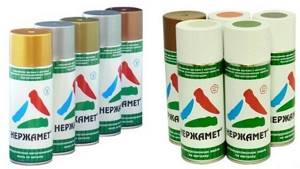
Aerosol paint for metal
To work on rust, type 3 aerosol paint is used. One can of it is enough to apply to a surface of approximately 3.5 m2, with a layer 0.05 mm thick. Therefore, spray paint on metal is not used over large areas. It is advisable to use it for small surface areas.
Aerosol paint for metal and rust is especially convenient for touching up damaged paint layers and for painting hard-to-reach places.
As a rule, aerosol paint for metal against rust is multifunctional; in addition to working on steel surfaces, it is suitable for painting non-ferrous metals, as well as wood, plaster and stone.
How much does it cost to paint pipes?
And yet, let’s make a reservation that in our price list for painting a metal pipe, the price per meter is indicated on average and may vary slightly. This depends on factors such as:
- urgency of the order;
- the length of the pipeline or the number of pipe blanks that need to be processed;
- working conditions.
Finally, how much it costs to paint a pipe per linear meter is also influenced by the “origin” of the material for painting. The world of modern paints is very diverse. Epoxy, polyurethane, alkyd, powder and other compounds are sold at different prices, which are determined not only by the manufacturer, but also by the seller. We give a good discount to the customer who has already acquired all the necessary materials. But if you don’t have them, we’ll select the best paint to work with your pipes. At the same time, painting the pipe and the price per meter will remain just as attractive for you
How to choose paint?
The final result of your work depends not only on how the paint is applied to the metal, but also on how high quality it is and how suitable it is for such work. Paint for heating pipes must meet the following requirements:
- heat resistance from 100°C;
- resistance to abrasion and aggressive cleaning agents: pipes and radiators have to be washed quite often;
- non-toxic: during the heating process, the paint coating should not release odors or harmful substances into the air.
Types of paints
Today on the market you can find paints with different component compositions.
Acrylic enamels are produced on the basis of organic solvents, so painting pipes is inevitably associated with an unpleasant, pungent odor. However, the result will be a durable glossy finish that will retain its integrity and attractive appearance for a long time.
Alkyd paints are also in great demand for transforming pipes and radiators. Their downside is the pungent odor not only during the painting process, but also during operation. But the layer turns out to be really durable. Alkyd paints are distinguished by a richness of shades.
Water-dispersed enamels are attractive because they do not require much time to dry pipes and radiators, and the painting itself takes place without emitting a pungent odor, because these enamels do not contain caustic solvents.
Date: September 25, 2021
Painting of metal structures
Particularly difficult for painters to work with are metal structures already assembled from pipes. Especially static ones that cannot be assembled or disassembled. If you are the owner of such an object and want to update its corrosion protection, our metalworking shop is also ready to help you. How much does it cost per linear meter to paint a metal pipe in this case, we will be able to say after assessing the complexity and condition of the structure. Are you still looking for a contractor, and unpainted pipes are gathering dust in the warehouse or, even worse, getting wet in the rain? Contact us and in the near future they will receive reliable anti-corrosion protection. Our specialists will determine which composition is suitable for your rental, correctly calculate the paint consumption, provide the optimal prices for painting the pipe and fulfill your order flawlessly.
Rules for calculating the amount of paint
There are no uniform standards for calculating the amount of paint for coating pipes, since all painting materials have different properties (viscosity, density, list of components, etc.). But the approximate paint consumption per 1 sq. The surface meter is indicated on the container in which it is sold. Please note that 2 layers will be required. Therefore, to correctly calculate the required amount of paint, it is necessary to determine the surface area of the pipe.
When painting pipes, you need to take into account their type, purpose, material of manufacture, etc. And the paint itself must correspond to the parameters of the utility service being processed.
Powder painting services
By performing powder coating of pipes in Moscow, we guarantee our customers the durability, durability of coatings and the aesthetic appearance of the products. All rolled products to be processed undergo additional preparation for painting - mechanical cleaning, degreasing and phosphating. These procedures ensure perfect adhesion of the substance to the metal. The volume of our furnace allows us to polymerize large-sized products. Our specialists can provide a full cycle of operations: from loading workpieces and transporting them to the workshop to subsequent delivery back to you.
Options for coloring compositions
The modern construction market offers a wide variety of paint options that can be used on heating pipes. Let's look at the most popular among them.
Alkyd enamels
Such coloring compositions are the so-called time-tested classics. This paint is attractive due to its low cost, the price per package is one of the lowest on the market, but you should be prepared for a not very pleasant smell during its use, which subsequently disappears for a very long time.
Other advantages of alkyd enamel include resistance to wear and temperature fluctuations from 0 to 90 degrees. However, unfortunately, it will not be possible to avoid yellowing of the white color after a couple of years. Actually, it’s like painting a heating system without smelling too.
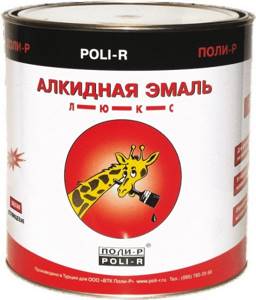
Acrylic paints
Often, acrylic paints, which may contain a silicone or latex base, are used to tidy up radiators and other heating pipes. Often such paints are called facade paints due to the most common scope of their application.
Each of these paint options has its own characteristics. For example, acrylic-silicone paint is resistant to moisture, so you can wash batteries and pipes as often as you want without fear of damaging the surface.
However, if the surface to be painted is classified as problematic, you should pay attention to acrylic paints with latex, since they have high adhesion rates.
They can be used on glass, ceramics or polished. In search of an answer to the question of how to paint copper heating pipes, you should turn your attention to paints with a latex composition.
The most common acrylic-based paints are water-dispersion coatings. However, their use is accompanied by a number of certain subtleties that should be taken into account.
The most significant among them:
- Such a composition, provided it does not contain silicone or latex, is very sensitive to washing with special detergents; accordingly, over time, the paint will simply be washed off the surface of the radiators;
- An important point is whether it is possible to paint pipes with these compounds during the heating season. Acrylic-based water-dispersion paints have a certain threshold of heat resistance. When the temperature reaches more than 90 degrees, the paint coating will soften. If the temperature reaches 120 degrees, the coating will begin to decompose;
Captain Obvious informs: since according to standards the temperature of heating radiators cannot exceed 95 degrees, decomposition of the coating will not occur at home.
- If you are going to pay attention to this type of paint, it is advisable to give preference to those that the manufacturer positions exclusively as radiator paints. Only in this case do they contain a special component that imparts resistance to heat.
Enamels KO
Another coating option for heating pipes is silicone-based paints (OS). Among the undoubted advantages of such paints are excellent adhesion to almost all metal surfaces and high resistance to a wide range of temperatures.
If your home's plumbing is made of copper, you shouldn't look for a better option than KO enamels. There are several options for enamels of this type, each of which does not lose its properties even after a considerable time after application.
An example of domestically produced KO enamel is the composition “Celsit-500”, which is actively used for painting metal pipes. The manufacturer of the composition is the Moscow company KrasKo.
The instructions for using this composition are not too strict; the most important thing when using it is to ensure sufficient ventilation of the room, since it is based on a petroleum solvent.
In addition, it is worth highlighting some advantages of the composition:
- High resistance to petroleum products and oils;
- A wide range of temperatures at which the composition is able to retain its previous properties. As a result, such paint is suitable not only for radiators, but also for painting the external surfaces of stoves and boilers;
- This enamel lacks air permeability, as a result it can be used as an anti-corrosion coating.
Metal based paints
When considering options for paint coatings for heating pipes, you should not lose sight of the compositions that are made based on a suspension of metal powder and organic varnish. The so-called binding components act as additional substances here.
As an example of such a composition, we can consider the commonly used enamel BT-177, called “serebryanka”. Essentially, this is a bitumen-type varnish in which finely dispersed aluminum chips are dissolved.
Among the various options for coloring compositions, another interesting option is often used - fire-resistant paints, which are characterized by fire-resistant properties. The most well-known (KrauZ and Polistil), as well as their analogues, are distinguished by their ability to undergo so-called swelling under strong heating. As a result, the resulting layer protects the surface on which the paint is applied from heating.
Types of metal painting
Of course, you can paint pipes in other ways: apply a liquid composition using a paint brush, roller or spray gun. For small products, a method such as dipping can be used. But all of the above methods are far from economical; when used, sagging forms on the metal surface. And the adhesion of the paint is not as tight as with powder coating of pipes, the price per meter of which, although higher, guarantees an unsurpassed result.
Powder coating of profile
In addition to powder painting of the pipe, the price of which may be slightly higher due to the size and complexity of the product, we also suggest that you order the application of a protective powder coating on any type of profile: T-beam, I-beam, angle, channel. And even for more complex forms of rolled profiles - for example, Z-shaped. Our specialists will work with flat or corrugated rolled products, as well as those with holes.
Painting galvanized and sheet metal
Powder coating of pipes is also used for galvanized products to further increase their protection. The aesthetic function is no less important, since shiny and pleasing to the eye new galvanization fades over time. In contrast, powder paint does not fade and even after several years remains just as rich. Both sheets and products of more complex shapes can be powder coated after galvanizing.
Powder coating of aluminum profile
Aluminum profiles are painted for approximately the same reason as galvanized steel. But for serial painting, they use not thermoplastic, but thermosetting paints, which are the most resistant to temperature fluctuations and are capable of forming a thin layer on the surface - up to 75 microns. Depending on the type of product and the conditions in which it will be used, choose the appropriate type of paint. The most commonly used is polyester, less often - epoxy, polyurethane, acrylic or mixed.
Painting the picket fence
Powder-coated steel is often chosen for installing fences. But if “blind” profile sheets are used to fence industrial areas, to create suburban fences and hedges such lightweight decorative material as picket fences is used. Naturally, painting of the strips (pickets) is carried out before assembly, as is the case with powder coating of pipes.
Painting of fittings and hardware
Our metalworking shop is a broadly specialized enterprise.
We are ready not only to perform powder coating of pipes in Moscow, but also to work with the smallest rolled products - fittings and hardware. If a pleasant appearance is primarily important for fittings, then the fasteners are painted mainly for protective purposes. We pay special attention to pipeline fittings, ensuring that their color matches the color of other network elements. Do you need powder coating of rolled steel? Or maybe you are interested in powder coating of pipes, the price per meter of coating? All questions can be found on this page and in the “Cost” section, and if clarification is required, our managers will share additional information with you.
Pipeline painting
Modern engineering, industrial, municipal and other communications, their networks and systems are designed to transport various substances that pose a danger to humans and the external environment.
Based on this, back in Soviet times, a special document GOST 14202 69 was developed for the painting of pipelines, which strictly regulates what color markings and other signal symbols should notify personnel about the contents of the pipe with which they have to work.
Purpose
Let us immediately make a reservation that this requirement is not at all advisory in nature, moreover, non-compliance or failure to properly comply with the requirements of SNiP is strictly prosecuted by law.
This is not due to the fact that someone wanted to paint this world with new fresh colors, but because in the event of an accident, maintenance, and other contacts and manipulations with the listed objects, rescue work, the Ministry of Emergency Situations and other special work must know for sure , what substances they will have to deal with and what specific measures should be taken to localize and eliminate the danger.
In addition, we would like to remind you that pipelines carry not only tap water, heating substrates and sewage.
Modern production and the chemical industry in the distant past manipulates these substances, such as:
- Flammable and explosive gases of various origins,
- Flammable and explosive liquids of various origins,
- Toxic gases and liquids,
- Superheated steam
- Saturated steam,
- Substances with high pressure
- Non-flammable gases and liquids,
- Acids, as well as fuming and concentrated acids,
- Alkalis of different compositions,
- Terrible organic compounds
- Air vacuum,
- Every substance is under great pressure,
- Other scary or particularly important substances.
Note! Apart from the obvious danger dictated by the chemical composition of the transported substance, temperature (both high and low), and pressure and quantity play a key role.
Of course, in the event of a mainline failure and a leak, fire or other terrible activity of the transported substance, an emergency situation arises, and emergency operations, citizen rescue efforts, evacuation teams and other participants in the liquidation of the consequences of the incident must be fully notified about the nature and composition of the source of danger.
The consequences of the tragedy can extend not only to local, regional, regional, but also national and global scales. This event takes the topic under discussion to a completely different level, and here the issues are not resolved by home advice - whether to apply paint inexpensively with your own hands or bring it to a painter.
This is a national nuisance, which is one of the most controlled and accountable at the level of ministries and departments of various states and their alliances.
Note! The price of failure to comply, ignore, sabotage or incorrectly fulfill labeling requirements is the lives of many people, the integrity of the infrastructure, the performance of the industry and life support companies of cities, clinics, and other important facilities; this is a matter of preserving and protecting natural objects, as well as unique ones.
Groups of substances and corresponding colors
According to GOST 14202 69, it was decided to divide all transported substances into ten larger groups, which are united by certain non-specialized qualities.
Thus, all substances, to a first approximation, are divided into the following groups:
- Water (technical, drinking, waste),
- Steam,
- Air space,
- Combustible gases , as well as liquefied gases,
- Non-flammable gases , as well as liquefied,
- Various acids , as well as fuming ones,
- Alkalis,
- Flammable liquids,
- Non-flammable liquids,
- Other substances.
These larger groups of substances correspond to certain colors, which indicate the presence of one or another chemical substance in the vessel:
| Group number | Transported substance | Color name |
| 1 | Water | green |
| 2 | Steam | red |
| 3 | Air space | light blue |
| 4,5 | Combustible and non-flammable gases | yellow |
| 6 | Acids | orange |
| 7 | Alkalis | violet |
| 8,9 | Flammable and non-flammable liquids | brown |
| 0 | Other substances | grey |
Note! In addition to the listed colors and objects, fire protection systems and installations are required to be painted in the signal red color, regardless of their contents.
Methods of applying marking paint
Identification paint is applied in a continuous layer over the entire surface or in the form of separate sections.
The method of applying paint is chosen based on a number of thoughts:
- Object placement,
- Pipe diameter,
- Length of the highway,
- Number of co-located lines,
- Requirements of industrial safety and life safety rules in this industry,
- Industrial sanitation requirements,
- Conditions of visibility and transparency of the air environment at the facility,
- The lighting conditions of the object itself,
- Staff amenities,
- A non-specialized architectural solution or terrain ensemble.
If the concentration of catchy colors is unacceptable for one reason or another, as well as in workshops with a significant number and length of communications, marking painting is carried out in sections.
If the number of communications is small and their length is shallow, moreover, if this does not worsen the working conditions in the workshops, the painting is carried out continuously.
External objects are covered with a continuous layer only taking into account the effect of solar radiation and other weather factors on the coating.
If the coating is applied to workshops and production premises in sections, then in this case the other surface of the pipe is usually painted in the color of the walls of the room. Along with this, the use of other marking shades to fill the gaps is strictly not permitted.
Note! In the case of laying highways in non-passable channels or using the channelless method, markings are applied in the areas of inspection chambers and wells.
Another important rule: areas of identification coating are applied taking into account local features (weather, climate, solar activity, visibility).
Along with this, they are located in the most important and critical places - connections, branches, at sampling and instrumentation points, at the points where main roads pass through walls and other obstacles, ceilings, partitions, and at the inputs and outputs of production facilities.
Note! The frequency of application in objects and on the territory of outdoor installations is at least 10 meters, on open highways and pipelines - from 30 to 60 meters, depending on local conditions.
The width of the sections directly depends on the diameter of the pipeline. For objects with a diameter of up to 300 mm - no less than 1200 mm (four diameters), for objects whose diameter exceeds 300 mm - no less than 600 mm (two diameters).
If the dimensions of the highways are really enormous, it is permissible to apply no less than ? pipe circumference taking into account insulation.
Note! The listed application rules and dimensions must necessarily correspond to the diameters of main pipes and pipelines.
Scary objects
Here GOST leaves only three primary colors:
- red – explosive and flammable, flammable,
- green – neutrality,
- yellow - toxicity, toxicity, extreme vacuum, suffocation, radioactivity, the ability to cause chemical burns, or simply dangerously high pressure.
For pipes containing substances with several hazards, it is possible to apply multiple rings, in other words it is possible to have a red and a yellow ring at the same time.
Note! Pipelines with deep vacuum, in addition to the painting of pipes and rings, must necessarily have the inscription “Vacuum”.
In addition, the short chemical name of the substance is written on the rings themselves and shows the direction of its movement. In normal and emergency situations, this is very important and affects many factors on which people’s lives may depend.
For very scary objects, in addition to everything else, warning signs of different contents are used, the color, shape and content of which are also strictly regulated and established. The sign must have a triangular shape, a yellow background and dark-colored graphics.
In most cases, such signs or symbols indicate the following substances:
- Strong poisons
- Explosive compounds,
- Radioactive substances,
- Other very dangerous compounds and their mixtures, especially harmful when splashed.
If the instruction does not contain specifics, then there is an exclamation symbol on a yellow background.
In addition, marking shields are used, which do not change color when the substance leaks. In most cases, they contain an indication of the type of substance and one of the sharp ends indicates the direction of movement of the medium; from time to time, double-edged shields are used.
Conclusion
To ensure normal operation and eliminate accidents of modern industrial and main facilities, the transfer of substances using pipelines is necessary. For safety, they are marked in accordance with GOST and SNiP, which is clearly demonstrated in the video in this article.
Loading…
Source: https://partner-tomsk.ru/santehnika/trubyi/okraska-truboprovodov-razlichiya-naznachenie-standartyi
